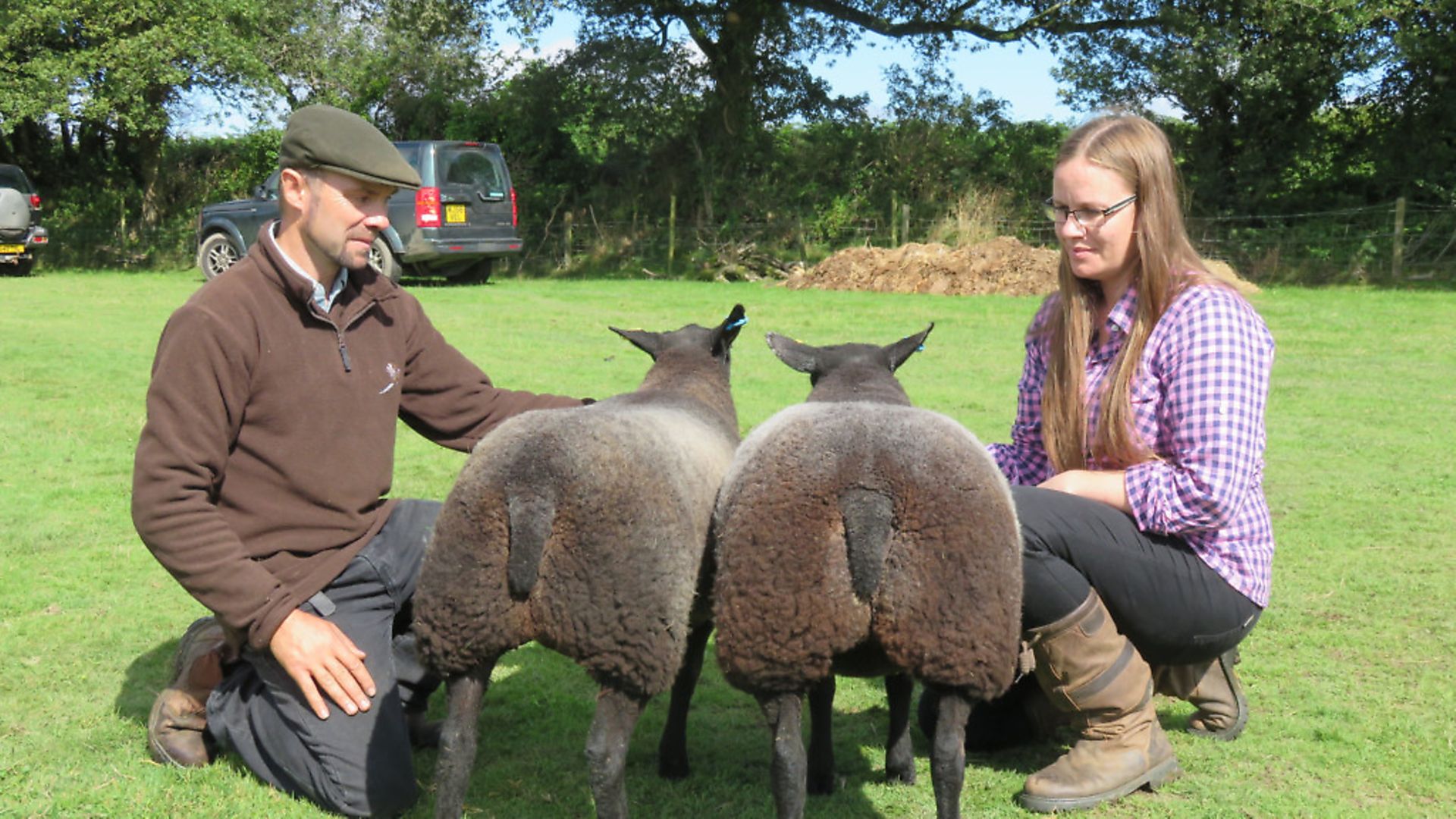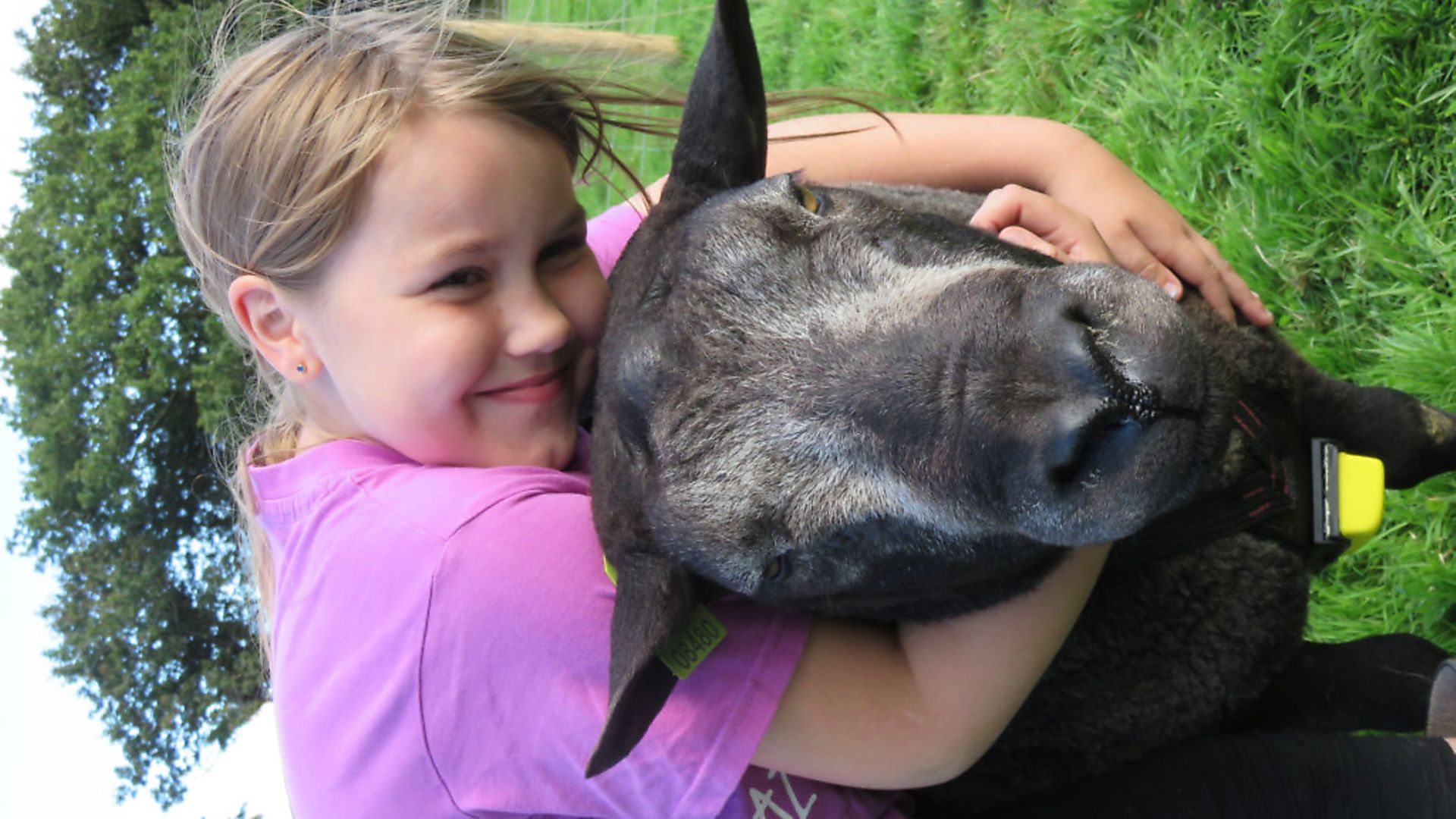Debbie Kingsley talks to sheep keepers Steven and Hannah Payne about their Tordown flock

Steven Ley, partner Hannah and children Zoe, 9, Zac, 15, and Chloe, 19, live near Bridestowe in Devon, where Steven works on a 400 acre farm, looking after sheep and cattle. But in their spare time they keep an interesting range of sheep of their own, on various fields dotted about Dartmoor. Both Hannah and Steven are from farming families who loved showing their livestock, although in Steven’s case it missed the previous generation which might explain why he’s making up for it now. They keep Badgerface Welsh Mountain sheep, Bluefaced Leicesters, Badgerface mules, Nelson Welsh Mountain, Whiteface Dartmoors, Texels and Blue Texels.

Steven is always interested in something a little bit different. “Eighteen years ago I bought a few Blue Texel ewes but there was no UK society for them at that point and very little interest which made them difficult to sell, so I got rid of them. But a couple of years later they took off, and then the society was formed in 2003. They aren’t a cheap breed – it costs at least £500 for a Blue Texel ewe. Last year we went to the Llandovery Coloured Sheep Sale with £1,000 to buy a couple of ewes and came home with nothing, the prices ranging from £700 – £1,200, and we didn’t want any of the ones that went for the lower price. Rams were a more reasonable £500. But we’ve managed to build up to 20 Blue Texel ewes now.
Texels are known for lambing problems – their big square heads don’t make for an easy birth and caesareans are common for the breed. Is this also true of the Blue Texels? “The Blue Texels are finer boned than the whites and have narrower heads, so they have none of the lambing difficulties associated with the Texels.,” said Steven. “The lambs are born surprisingly slight at an average of just three kilos, then growing on quickly. We manage this by keeping the ewes in naturally good condition on the best grass up to Christmas, only supplemented with hay and minerals up to lambing, unless they are carrying triplets. After lambing the ewes get 1.5 kilos of sheep nuts a day. This is a very different regime to that followed by other breeds but it avoids the need for caesareans. This year we lambed at 200% which is unusual; you’d expect 150% from the breed. We sponge them which synchronises their heat and shortens the lambing period – perhaps it had a positive effect on fertility too. They make good meat lambs, finishing at 40 kilos at 16 weeks. The lambs do well on quite poor pasture and are good doers as most of our ground is over 1,000 feet and they thrive with no issues.
“Because we want our lambs to grow on well to look their best for the showing season, we’re now lambing in the middle of January, breeding our best eight ewes to produce show quality stock ready for the Royal Cornwall Show, our first show of the season. In 2017 we won Reserve Male Champion. We’re working to get the name of our flock out there – the Tordown Blue Texel Flock – we want to be known as breeders. We sold four ram lambs already this year and we breed to sell. If the males aren’t quite good enough they go for meat. We want to sell our Blue Texel rams to commercial farmers to put to their commercial ewes to produce strong meat lambs. We have bred our Badgerface ewes to Bluefaced Leicesters to produce mules which are then bred to a Blue Texel ram so we know that they produce cracking meat lambs.
“The breed standard requires them to have a nice meaty bum, to stand square, with a straight top line. As for markings, they should have a white halter mark running over their nostrils, white tips to the ears, white fangs on the lower jaw, a body that’s dark on the shoulders, light on the body and then dark again on the bum, with dark legs. But you can have two perfectly marked parents and they don’t necessarily throw lambs with the same features – it can be pot luck what you get. If you want really good stock it’s worth going to Holland, or in the UK to the sales at Worcester or Carlisle. Our new ram was brought over from Holland from a dispersal sale and we were lucky to get the pick of the rams.
Do Blue Texels require any extra care? “Because we show our sheep, if it’s very hot we bring the show sheep inside during the day so that their fleece doesn’t bleach, but otherwise they are no more difficult to keep than other breeds and are docile, full of character, not scatty, quiet and inquisitive”.
Like most Blue Texel flocks in the UK, Steven and Hannah’s flock are Maedi-Visna (MV) accredited. MV is a chronic infectious viral disease affecting the lungs and nervous system of sheep. There is no vaccine, no cure and the disease is fatal. MV accredited animals must not come into contact with non-accredited animals and there must be a minimum of a two metre gap between accredited and non-accredited animals at all times.
Not content with just showing his sheep, on the day I visited their flock Steven was going to Exeter Livestock Centre to judge the Texels at the annual NSA South West Ram Sale – a real honour. Although only a few Blues were to be among the Texels, perhaps the numbers will increase for this intriguing breed.
www.facebook.com/Tordown-Blue-and-badger-faced-Texels-and-Badger-Faced-Welsh-Mountain-sheep
Blue Texel factfile
Blue Texels were first recognised and recorded in Holland in the early 1970s, with blue sheep born to white Texel parents. Deliberate matings for the blue factor followed, and more blue animals were found in white Texel flocks. By 1983 there were 11 flocks with 213 blue sheep. With the formation of a breed society for these sheep in Holland, numbers have now risen to 6,500 sheep in 250 flocks. This society continues to register Blue Texels born to white Texel parents. Blue Texel flocks in Britain have now been formed both by importation and from blue sheep born in British white pedigree Texel flocks. There are now 300 registered flocks in all parts of the UK, The society being formed in 2003.
Blue Texel rams are competitive as commercial terminal sires for producing prime crossbred lambs for the trade. As the colour pattern is recessive, most crossbred lambs will be white. They also have a niche role as a terminal sire for coloured or rare breeds, to produce meaty coloured crossbred lambs, with possible added value from fleece, yarn, felt and skins.
For the small pedigree flock owner, Blue Texels are attractive and friendly occupants of home paddocks, parkland and orchards. The ewes are docile, thrifty and good mothers. They tend to have narrower heads than the more extreme Texel types, and therefore avoid the lambing problems sometimes found with the white Texel. A mature ram should weigh about 80kg, although they can weigh considerably more; a mature ewe about 60kg.
Image(s) provided by:
Archant
Archant







